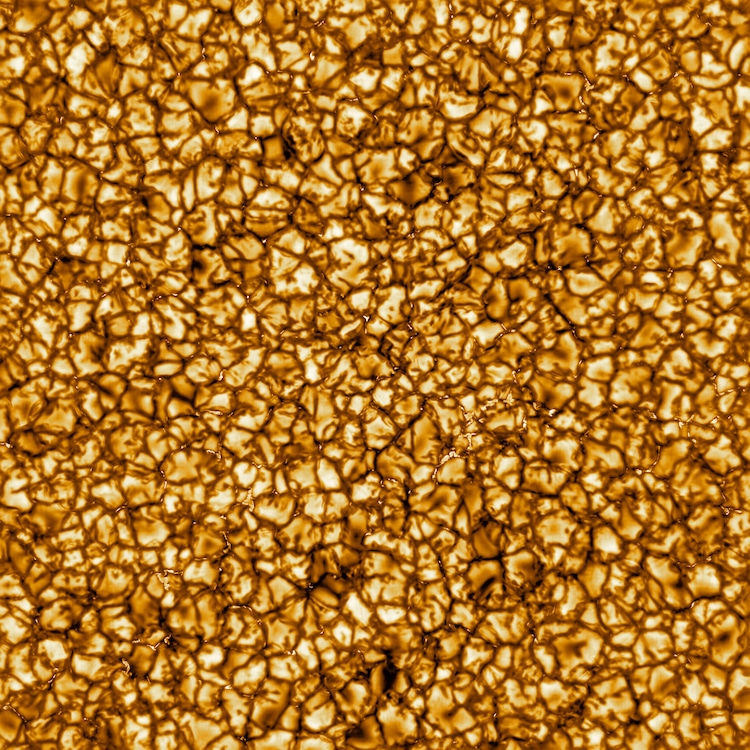And thanks to new technology, we’re now able to get an even better glimpse of the Sun.
This close-up view will enable scientists to gain new knowledge about how weather systems work on the Sun.
The incredible image looks like scorched earth and was taken from 789 nanometers.

Photo: NSO/AURA/NSF
So what are we looking at here?
The crackling field is actually a pattern that the boiling gas that surrounds the Sun has created.
To give a sense of scale, each individual cell-like structure is actually the size of Texas.

Photo: NSO/AURA/NSF
The light and shade in the image are indicative of the gas’s violent movements.
Bright spots appear when the hot solar material is rising up.
As it cools and sinks in a process known as convection, it forms dark lanes.
It’s in these dark lanes that we’re also able to see bright markers of magnetic fields.
These bright spots may be at the core of why the solar corona is more than a million degrees.
The photo is an incredible triumph for the largest solar telescope in the world.
As the telescope generates an incredible amount of heat13 kilowattsa specialized cooling system was engineered to protect the telescope.
In fact, seven miles of pipes are required to distribute coolant throughout the observatory.
In turn, this will allow governments to better prepare for possible future weather disasters.
Currently, there are only about 48 minutes of advance notice of these events.
See the Sun like never before!
The movie shows the turbulent, boiling gas that covers the entire sun.
In these dark lanes, we can also see the tiny, bright markers of magnetic fields.
These bright spots may be at the core of why the solar corona is more than a million degrees.